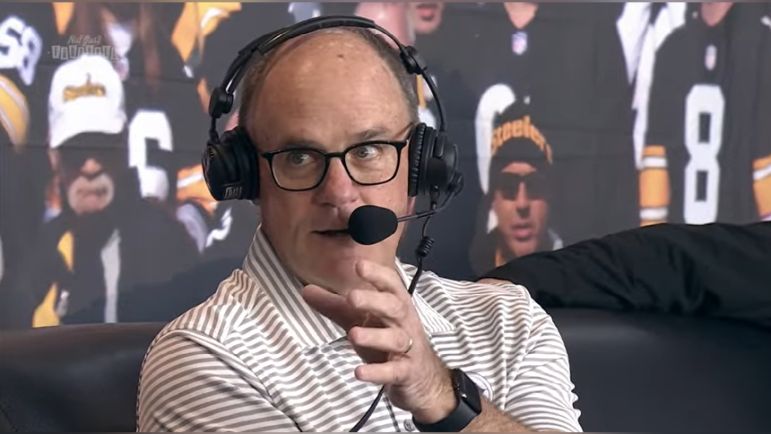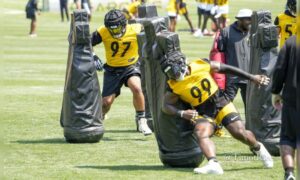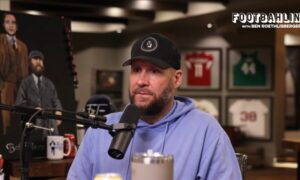When it comes to the NFL draft, different teams and general managers have different philosophies in their approach to team building. The Baltimore Ravens, for example, seem to be a team that always takes the best player available, with the idea that the most amount of talent on the roster will prevail in the end. Others will consistently draft for team needs to make sure they are filling holes in the most immediate way possible, but that can sometimes lead to reaching for lesser talents depending on the way the board breaks.
During the 2024 NFL Draft, the Steelers were fortunate to be able to get the best of both worlds with players rated high on their board at positions of need. Omar Khan admitted that they never thought Troy Fautanu would be available at No. 20, for example, and said they considered trading up for Zach Frazier as they waited to see if he would make it to pick No. 51 in the second round.
Kevin Colbert was asked about the anxiety and sense of urgency during the draft that can kick in as you watch players at positions of need get selected ahead of you on Cameron Heyward’s Not Just Football draft show.
“Every once in awhile that anxiety will get kicked in, and you have to be careful. Don’t reach,” Colbert said. “Reaching is the worst thing you can do, where, oh man, there’s only three left, we gotta take him but it’s the second round and we got him as a fourth rounder. It’s probably gonna be a mistake. Let’s take this other player at another position who’s a better player, but he’s worthy of that pick.
“But it’s hard. It is, because there’s only so many [at] your position. There’s only so many human beings of your size. People think that there’s a million defensive line types. There aren’t. And that’s why that’s a premium position as well. Quarterbacks, you see that happen often…But when you see a position coming off, and then sometimes it’s predictable, you have to be prepared, but you also have to be disciplined not to reach. Because if you reach for whatever reason, you’re probably gonna make a mistake.”
That is of course always the plan entering the draft, but best-laid plans don’t always work out. I am not going to claim to know the intricacies of everything that goes into a draft decision, but there are many factors to consider. How urgent is one of the positions of need? Is there pressure from ownership to address a specific position of need, like what probably happens with quarterbacks more often than not in the first round?
We will never know exactly where they have players ranked on their big board, but Colbert was certainly accused of a reach or two throughout his tenure as the GM.
Back in 2016 the Steelers selected CB Artie Burns in the first round after watching four corners get selected ahead of them, including William Jackson III one pick before them to the Cincinnati Bengals. Burns had some of the physical traits to be a first-round talent, but the tape didn’t exactly line up, and things didn’t end up working out.
But at the time, the CB position was in a rough spot with Antwon Blake and 30-year-old William Gay starting the season prior as it started to become clear that Cortez Allen wasn’t going to pan out in the NFL. It was one of their biggest needs at the time, and one could certainly argue that Burns was a reach.
Then there was S Terrell Edmunds in the first round in 2018. Minkah Fitzpatrick and Derwin James were already off the board, but the Steelers needed a safety. Many had Edmunds as a second- or third-round talent, but the Steelers picked him at No. 28 overall. The next safety didn’t come off the board until Jessie Bates III at No. 54.
Sean Davis and Mike Mitchell were the starting safeties in 2017, and they hadn’t really solved problems at the position that had persisted since Ryan Clark and Troy Polamalu roamed the secondary. Edmunds panned out okay, but it wasn’t the best value, and they turned around and traded for Fitzpatrick the next year.
Kevin Colbert himself would probably admit that he didn’t always follow his own advice on reaching for players, but that is the benefit of hindsight and speaking from experience after the fact. Fortunately, Omar Khan was a part of the organization for almost the entirety of Colbert’s career and had a front row seat to the successes and failures of Colbert’s tenure to learn from. Through two drafts, you would be hard-pressed to identify a reach made by Khan.








